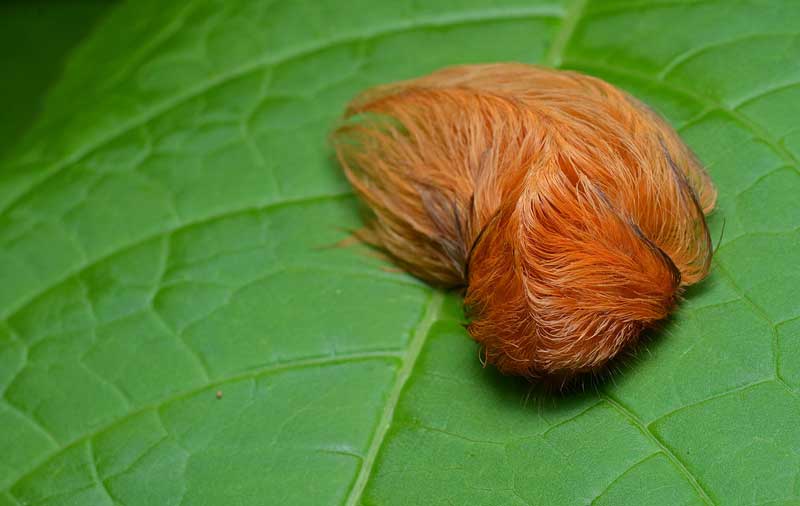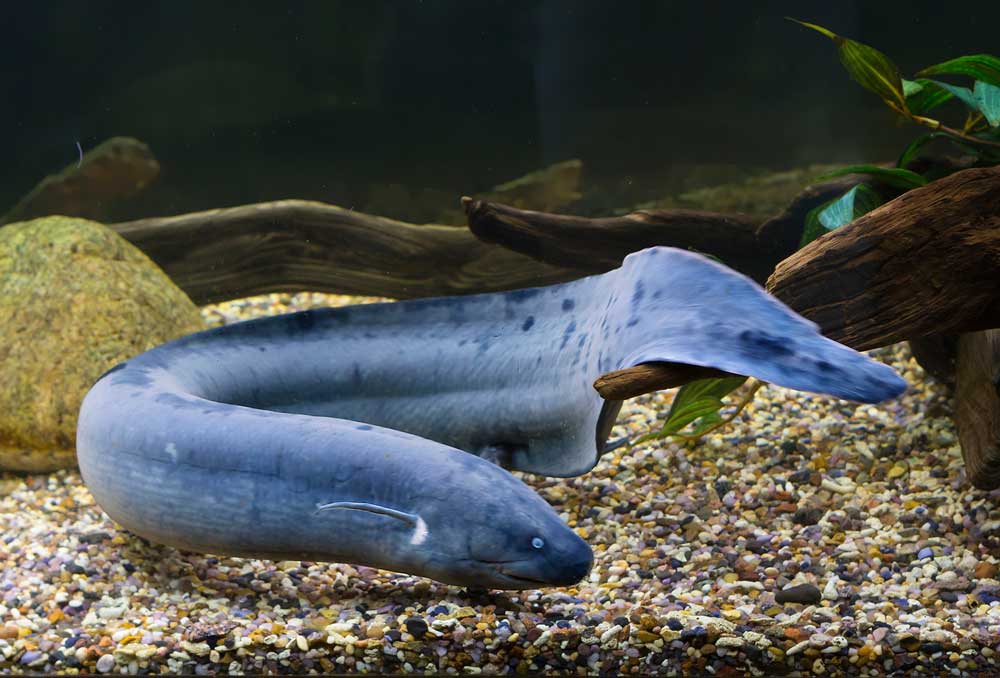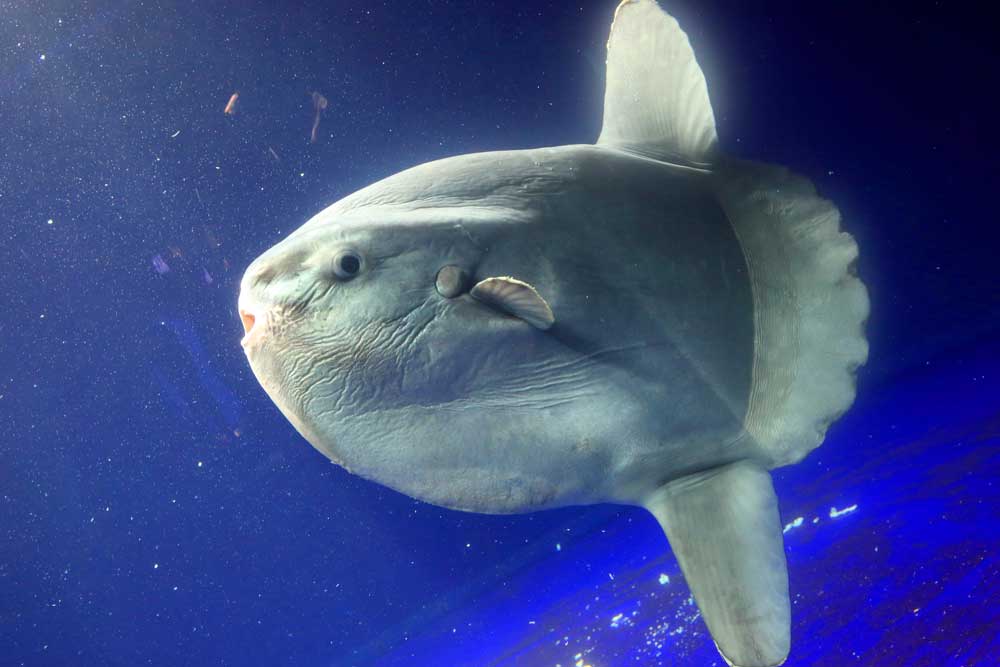|
Did you know honeypot ants have specialized workers that gorge themselves on nectar to the point of being like water balloons? Their abdomens get so fat that the ants can barely move. Why would these ants voluntarily embrace a diet that seems so unhealthy? They do it for the good of the entire colony. These specialized workers fill up on nectar, then they go back to the nest to become a "living larder." You probably know that some insects, like honeybees, store huge amounts of sweet food in their nest (in combs) to be consumed later. Well, honeypot ants do it differently. Instead of storing the nectar in combs, they have a system of living storage. The stuffed ants just hang around the nest until the food in their abdomens is needed. When the time comes to use the food, the other ants in the nest stroke a stuffed ant's antennae. This triggers the stuffed ant to barf up the nectar, which is consumed by the colony. The photo below shows four stuffed honeypot ants clinging to the roof of the cavity, with regular sized ants below them. Photo Credits: - Honeypot ants - Greg Hume, modificada por Aurélio A. Heckert, CC BY-SA 3.0, via Wikimedia Commons
0 Comments
Did you know the caterpillar of the southern flannel moth has been widely dubbed as the Trumpapillar? Why, you ask? Well, many individuals of this caterpillar have a rather uncanny resemblance to a certain former president's hair. Yes, the photo below really is a caterpillar. Of course, Trumpapillar is not the official name of this insect, but the name has caught on as a result of numerous viral photos circulating since 2016. Seriously... Google it. You'll be surprised how many examples there are, with various colors and "styles." Setting all the whimsy aside, the flannel moth caterpillar is a fascinating creature. It has an effective defense. Those fine hairs you see? They hide venomous spines. And not just a little bit venomous. David Eagleman states, in the Journal Clinical Toxicology, that “Intense, throbbing pain develops immediately or within five minutes of contact with the caterpillar." Photo Credits: - Flannel moth caterpillar - Geoff Gallice from Gainesville, FL, USA, CC BY 2.0, via Wikimedia Commons Did you know lungfish are the only fish that have both lungs and gills? This allows them to survive in areas where the water dries up regularly.
Some other types of fish, like mudskippers, can live in water and on land also. But mudskippers don't have lungs. Instead, they trap water inside their unusually large gill chambers, and they carry that water with them, getting oxygen from it. They can also absorb oxygen through their skin. Lungfish, however, have actual lungs for breathing air. Although there were many lungfish species in the distant past, today only six species still exist—one in South America, one in Australia, and four in Africa. Because lungfish live where the water often dries up, it's not surprising that they all live in freshwater habitats. Lungfish can live a really long time. One particular specimen, a Queensland lungfish named Granddad, lived at the Sydney Aquarium, then was moved to the Shedd Aquarium in Chicago. Granddad lived in captivity from 1933 to 2017 and was thought to be at least ninety years old when it was euthanized due to its failing health. Did you know shoebills swallow baby crocodiles whole? These huge birds stand up to five feet (1.5 m) tall and have an eight-foot (2.4 m) wingspan. Predators of aquatic animals, they love to catch and eat lungfish, eels, frogs, turtles, and baby crocs, swallowing them all whole.
These birds used to be called shoebill storks, then anatomical studies suggested they might be more closely related to pelicans than to storks. And after that, molecular studies showed that they are actually more closely related to herons. Shoebills live in marshes of east Africa, where it is very warm. To cool themselves off, they have an interesting habit of... pooping on their own legs. When the liquid in the poop evaporates, this cools the blood flowing through the legs, which cools the bird's entire body. This bird also wins the prize for having the most intense stare in the animal kingdom. It's like they are sizing you up, trying to decide if you are small enough to swallow whole. Did you know meerkats like to eat scorpions? And that they teach their young how to safely kill scorpions? Meerkats, those adorable mammals from southern Africa that like to stand tall on their hind legs, are omnivores, but they really like scorpions.
Hunting scorpions is dangerous business, so meerkat parents teach their young by bringing them scorpions that have been dismembered. When adult meerkats find a scorpion, they dart in, grab it quickly, and rip the stinger from the arachnid's tail. A scorpion's pinchers don't have venom, though they can still be painful, so meerkats usually remove those too. To teach the very young meerkats, the adults bring them dead scorpions. As the youngsters get more experience, the adults bring them live scorpions with the stinger and pinchers removed. Finally, when the young are mature enough, the adults bring them live intact scorpions. Even with the stinger removed, some scorpions still have venom in their exoskeletons, so meerkats have even learned to rub their captured scorpions in the sand to remove the remaining venom. Did you know there is a brand new record for the world's largest bony fish? The new champion is an ocean sunfish.
Keep in mind that sharks and rays are cartilage fish, not bony fish. The whale shark is, by far, the largest fish living today, followed by the basking shark, the great white shark, the tiger shark, and the manta ray. But when it comes to bony fish, the ocean sunfish takes the prize. And as of December 9, 2021, a sunfish was found that beat the previous record (also held by a sunfish). Unfortunately, the sunfish was found dead, probably from being struck by a passing ship. It had traces of ship paint in a wound on its back. But marine biologists towed the body to shore and used a crane scale to weigh it. The official weight? 6,049 pounds (2,744 kg). Almost a thousand pounds heavier than the previous sunfish record holder. Astoundingly, when these giant fish are born, the young are only a quarter inch long, the size of a pencil eraser. |
Stan's Cogitations
Everyone needs a creative outlet. That's why I write. Archives
July 2024
|







 RSS Feed
RSS Feed